E SHEEPED X ELECTRONIC SHEEP X SS
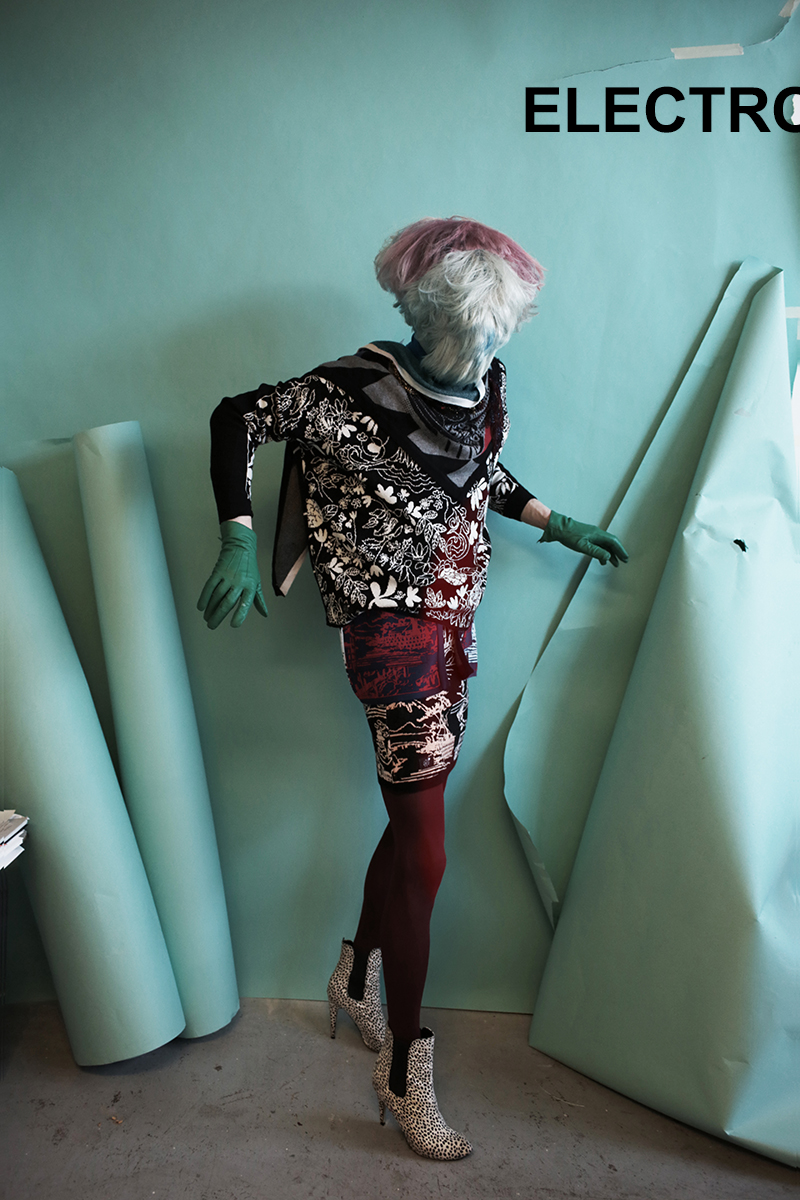
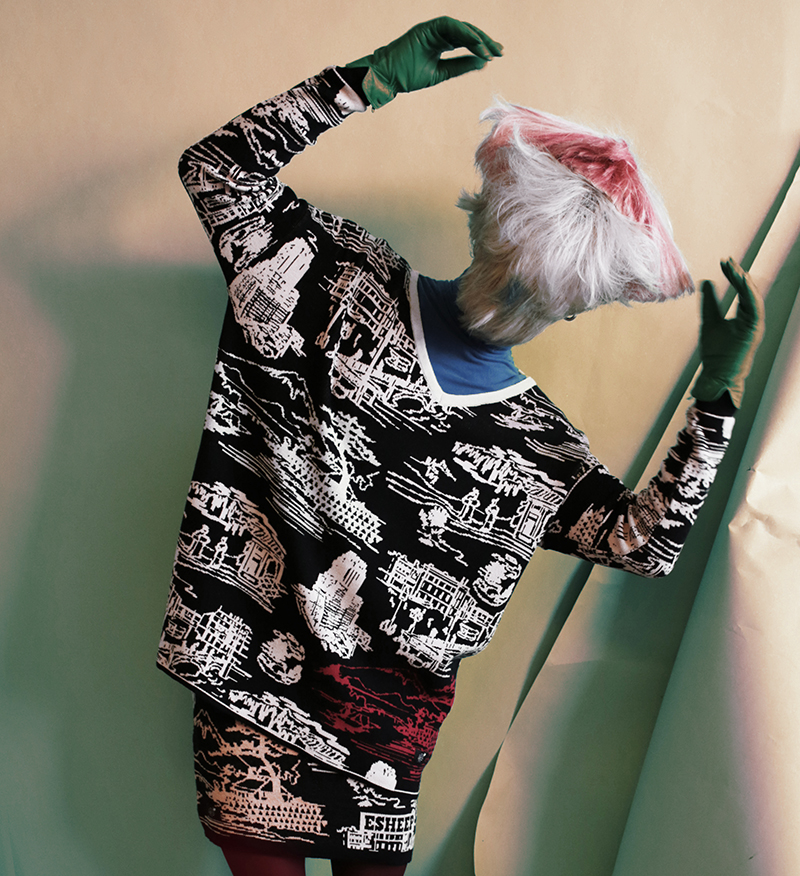
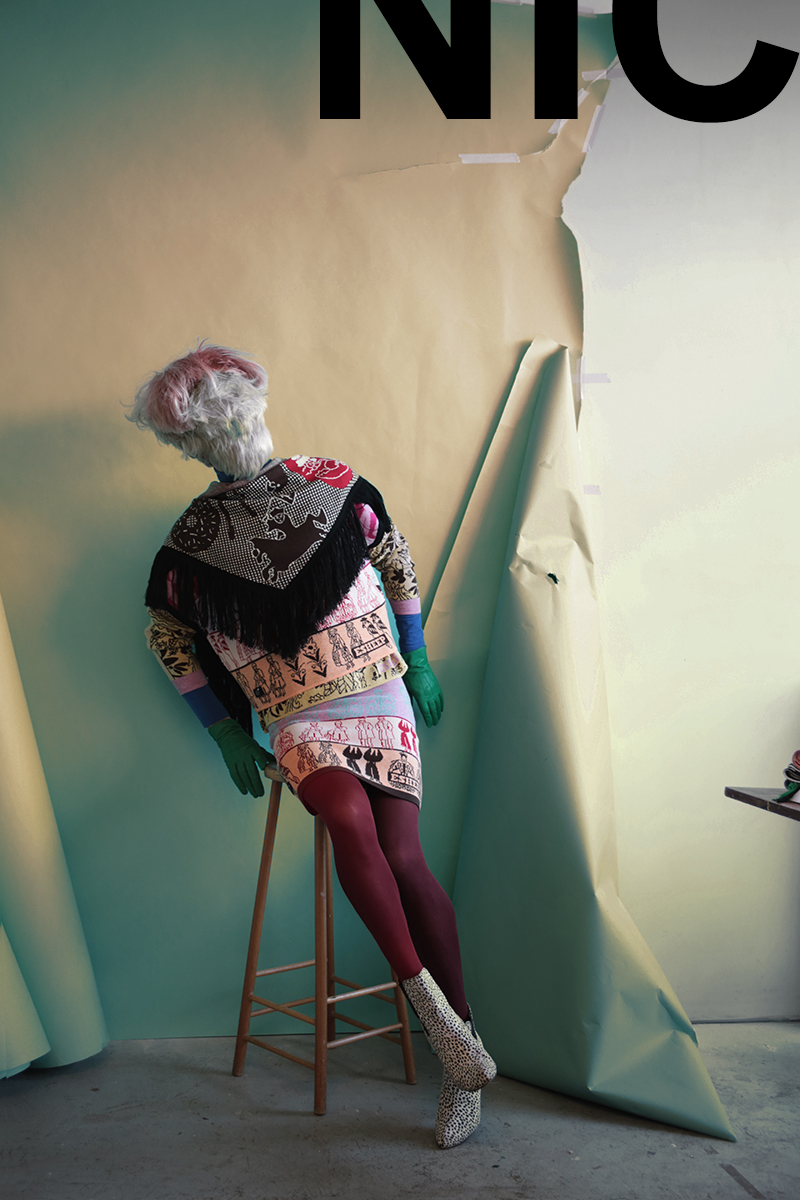
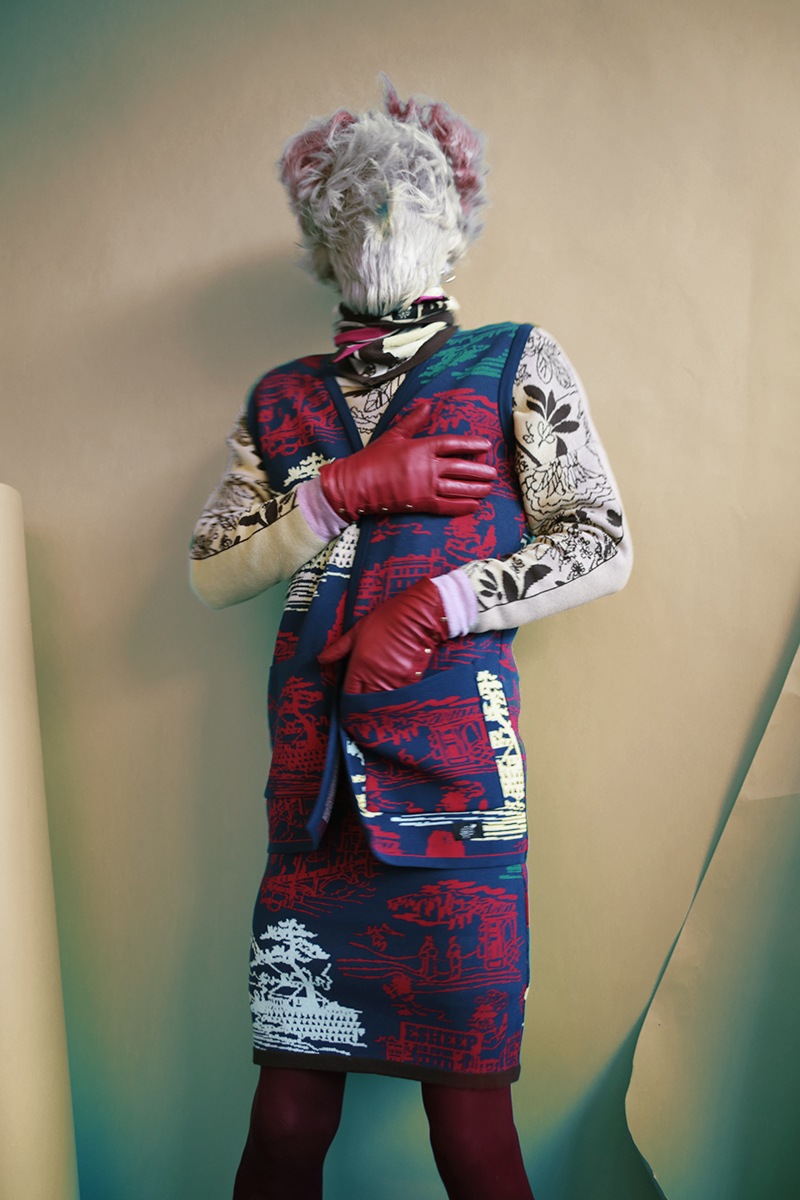
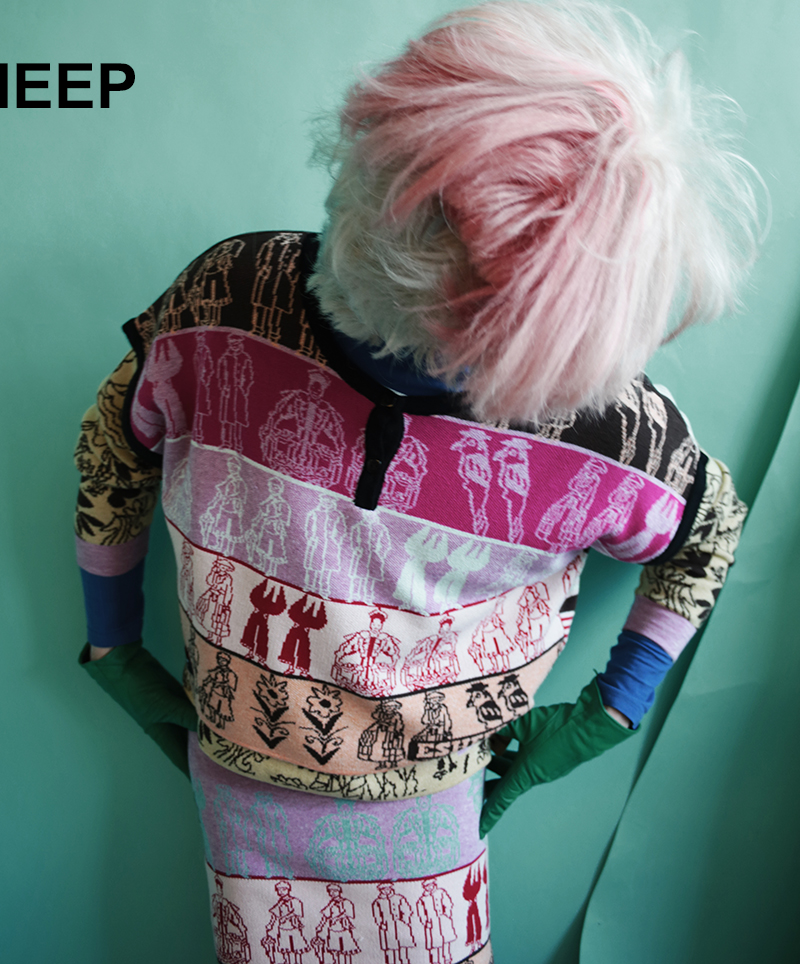
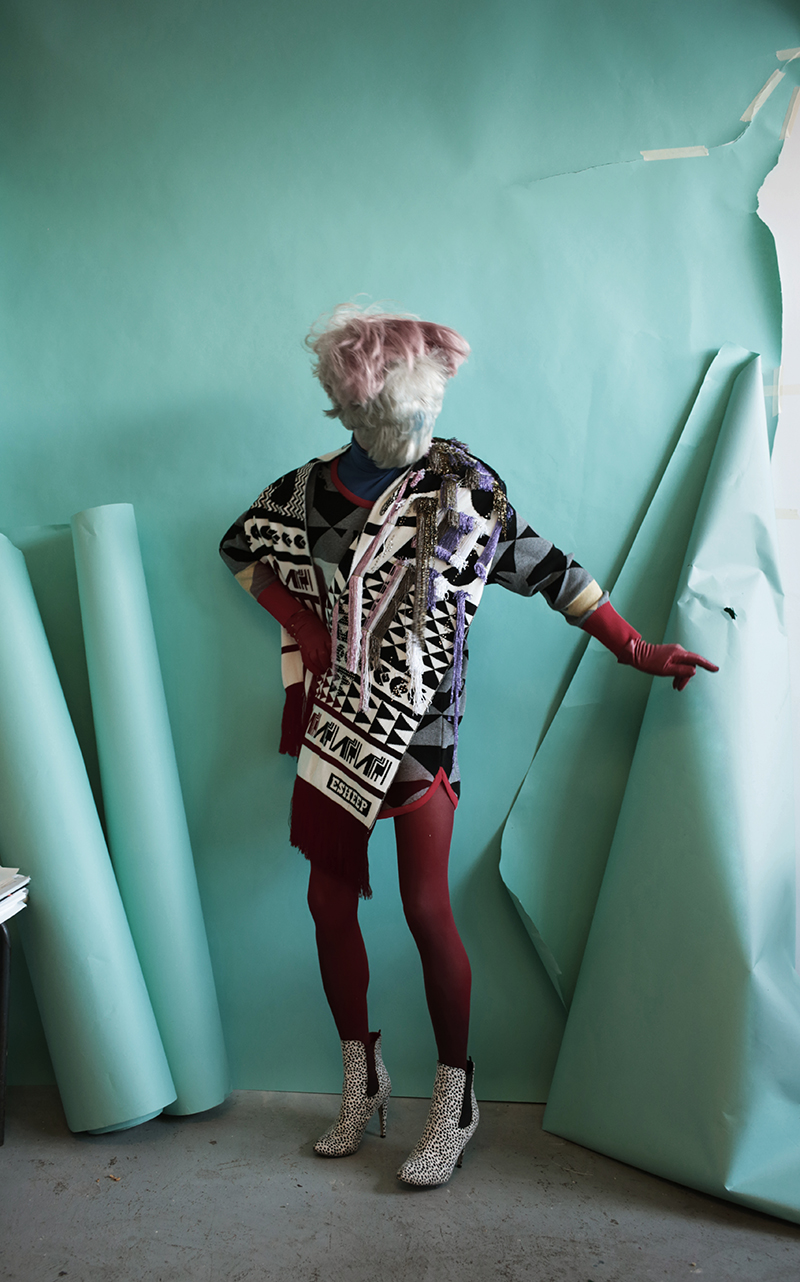
ELECTRONIC SHEEP
Design duo Brenda Aherne and Helen Delany have been working together for 15 years on Electronic Sheep, a fashion brand based in Dublin and London that combines dynamic graphics with intricate jacquard knit, print and even comic strips.
The “story” explored in each collection is part autobiographical scrap book and part wishful thinking. A dream life and a full past mixed into a tapestry of graphic motifs, characters, scenarios and interiors.
Describe what you do?
Brenda: I wear many hats – primarily I design, make, market & sell knitted garments and accessories through retailers and our own online store.
Helen: I think a lot about images I would like to create. I collect ideas and keep notebooks. Most of the time I work on the business side of the company with Brenda; planning collaborations, sourcing new stockists, working on events, lookbooks and press.
How did you arrive at this?
B: I started out studying animation, then switched to fashion design then decided to specialize in knitwear.
I always had in my head that I would have a design label and I am very lucky to have a design partner. I think it would be very hard to do this on my own and it would certainly be less fun.
H: I am originally a graphic designer with a background in print design. I arrived at Electronic Sheep when I was living in Rome and Brenda said she would like to use some typography prints that I did for Esheep T-shirts. I was working in a digital company as a creative director but I was more interested in exploring my own work and designing with Brenda so I left and returned to Dublin where Electronic Sheep was based.
How easy or hard is it?
H: It’s easier now as we have been doing it a long time. The design part is always the best bit and I love working with Brenda on this. It feels easy when we do what feels right. The business side can be hard, but we are getting better at saying no to things that aren’t right for us and focusing on the important projects, events, shops etc
What would you change about your industry, your work, you?
B: I would like the industry to be more ethical, slower and less wasteful and for my work and home life to be a bit more separate. Maybe I need to be more organized, structured and change my hairstyle more often.
H: I would like to change the high street and the big brands situation. The balance is gone. You can barely see an independent shop or small label on the horizon. Everything is very fast and cheap so design that is really considered is becoming an increasingly difficult prospect. Designers are disappearing in the over-saturation of super commercial brands. I’m not sure how to change it – maybe to re-educate us on what is actually good as opposed to what is being over-advertised. I’m guilty too.
Is there a plan?
B: Yes there is always a plan, It keeps changing and evolving. Sometimes we are the instigators of the changes and sometimes it is external factors.
Is the process from idea to product or output a changing one, or a routine one?
B: It varies, some ideas appear almost fully formed. Others change a lot during the design process and are almost unrecognizable in the final stage.
H: We have worked hard to get the ‘idea made into product’ to be successful in our knitwear so we try to keep that as straight forward as possible. We will always push the knit process a bit further each season, adding new textures, techniques or yarns. This year we did a collaboration with embroidery artist Scott Ramsay Kyle who worked on some of our scarves adding appliqué, crystals and embroidery. I love how it transforms our designs. Lately we have started to experiment with new products and materials that are not knitwear related.
Is there always an audience/ character/ market in mind?
B: Probably not as much as there should be, we are our own audience in a way. Our own critics too. We design clothes that we would like to wear and they all would need to pass our strict vetting process.
In the back of our minds of course we know what is popular through experience so naturally that comes into play. However we never sit down and think ‘who would wear this’ before we start designing.
H: Yes. Normally we design for what we would like to wear ourselves. Or we may look at an image or someone we know and say that would look good on them. Or maybe a musician or a superhero. It depends.
Explain the relationship between art/creativity and industry, can the two co-exist? Is successful work diffused work?
B: Yes I believe that art/creativity and the industry need and compliment each other. I am very much inspired by art but also consider each Electronic Sheep piece to be an art work.
H: I think you can be as experimental as you want at the beginning of the creative process but as you get nearer to creating an actual product for industry you usually need to reel it back in a bit. So it can be very personal or strange even but then it has another element like colour, shape or pattern that makes it wearable and accessible to other people and less self indulgent.
Is there an emotional, physical, mental backdrop to your work, what gets you motivated work wise?
B: I am not entirely sure what the motivation is but it is definitely emotional and I guess physical too. The need and desire to create has always been there. I was always making and drawing as a child. I like useful things though so making clothes suits that, I think
I would find it harder to be a fine artist for example. Whatever it is that motivates me I have never really analyzed it in case I break it!
H: I think an emotional one. For example today I felt motivated by a new product idea Brenda came up with. We are friends since childhood and so we often delve back into our 70s/80s imagination/sourcebook. She described something that I had as a kid and it conjured up happy images and also I could visualise an interesting accessory that would work in our next collection.
Tell us about the current collection/project you are working on; what is your current source of inspiration?
B: At the moment we are designing our AW17 collection and our Electronic Sheep comic is the main inspiration. We have a number of collaborations in the pipeline, some in areas that we haven’t worked in before so it is really interesting and inspiring.
H: We are also collaborating with Irish knitwear producers/label “Fisherman Out of Ireland’ who are based in Donegal. These knitted garments that we are working on are quite experimental and pushing technical boundaries. The final pieces will be shown at an exhibition called ‘TextIsle’ In January 2017 commissioned by The Crafts Council.
We are really excited to be stocked at Womderland magazines new shop that opened this week – located at 192 Piccadilly, London W1J 9ET.
Who or what are your influences, heroes, idols, muses, irritants?
B: I am constantly changing all of the above, I am not very loyal in this respect. Maria Callas is my current obsession!
H: I have quite a few heroes/idols/influencers – mostly from the past: Hitchcock, Roman Polanski, Warhol, Surrealists, Dadaists, Nico and Velvet Underground for example.
If you were to study a subject which is related to your practice but could inform your work what would it be?
B: History
H: Fine Art Print
If you could do something else what would it be?
B: Basket weaving
H: Inventor/Actor/Explorer/Philanthropist